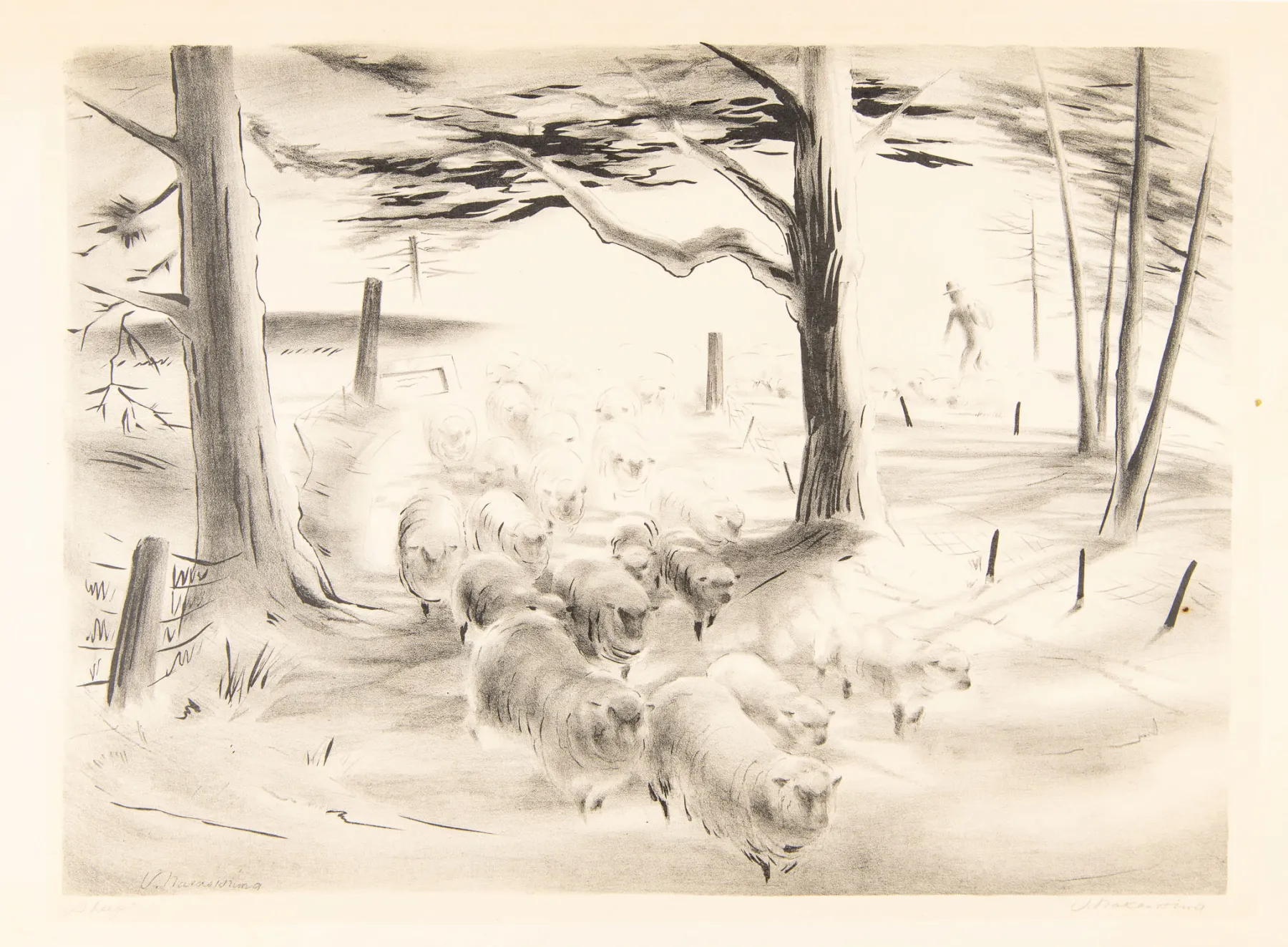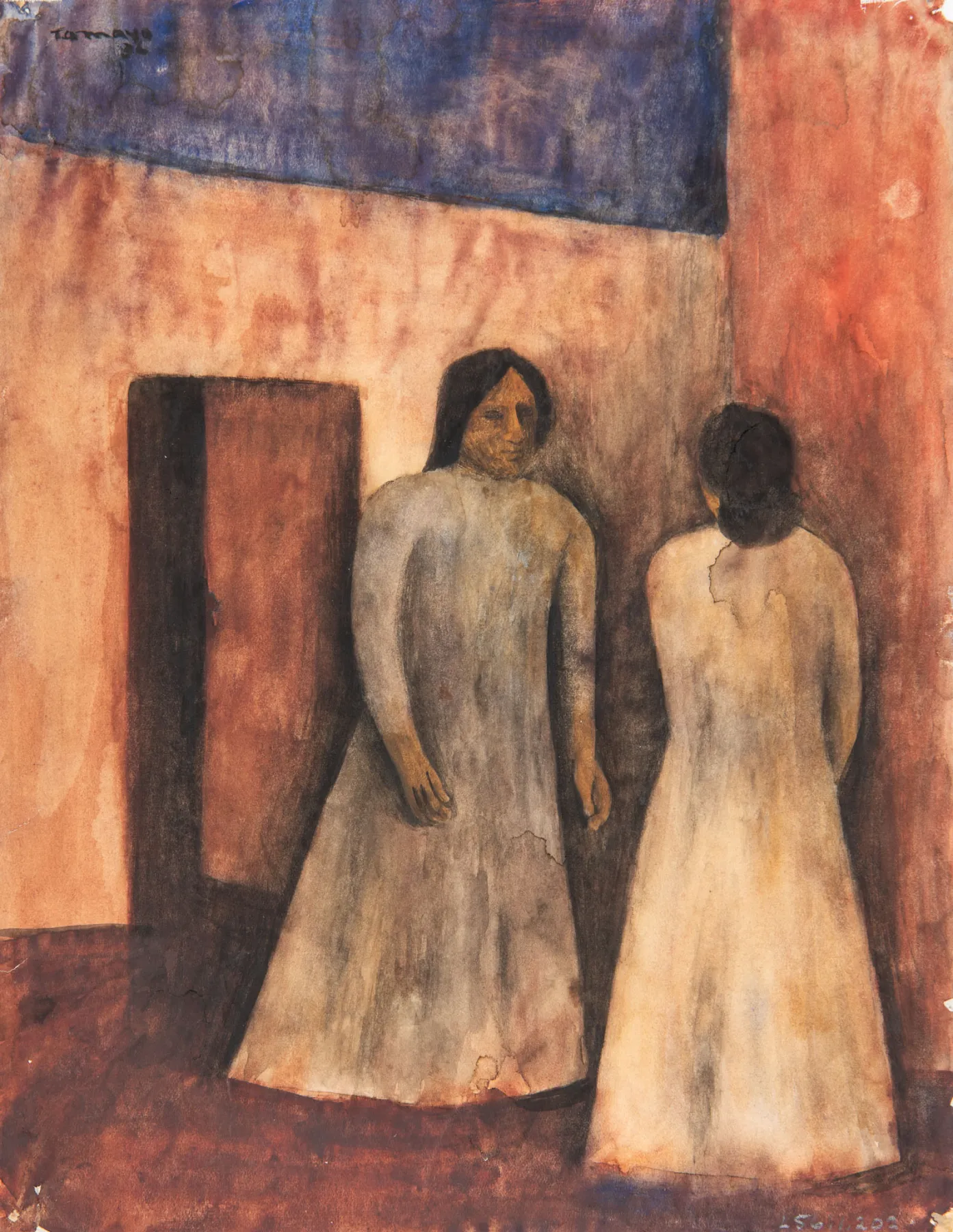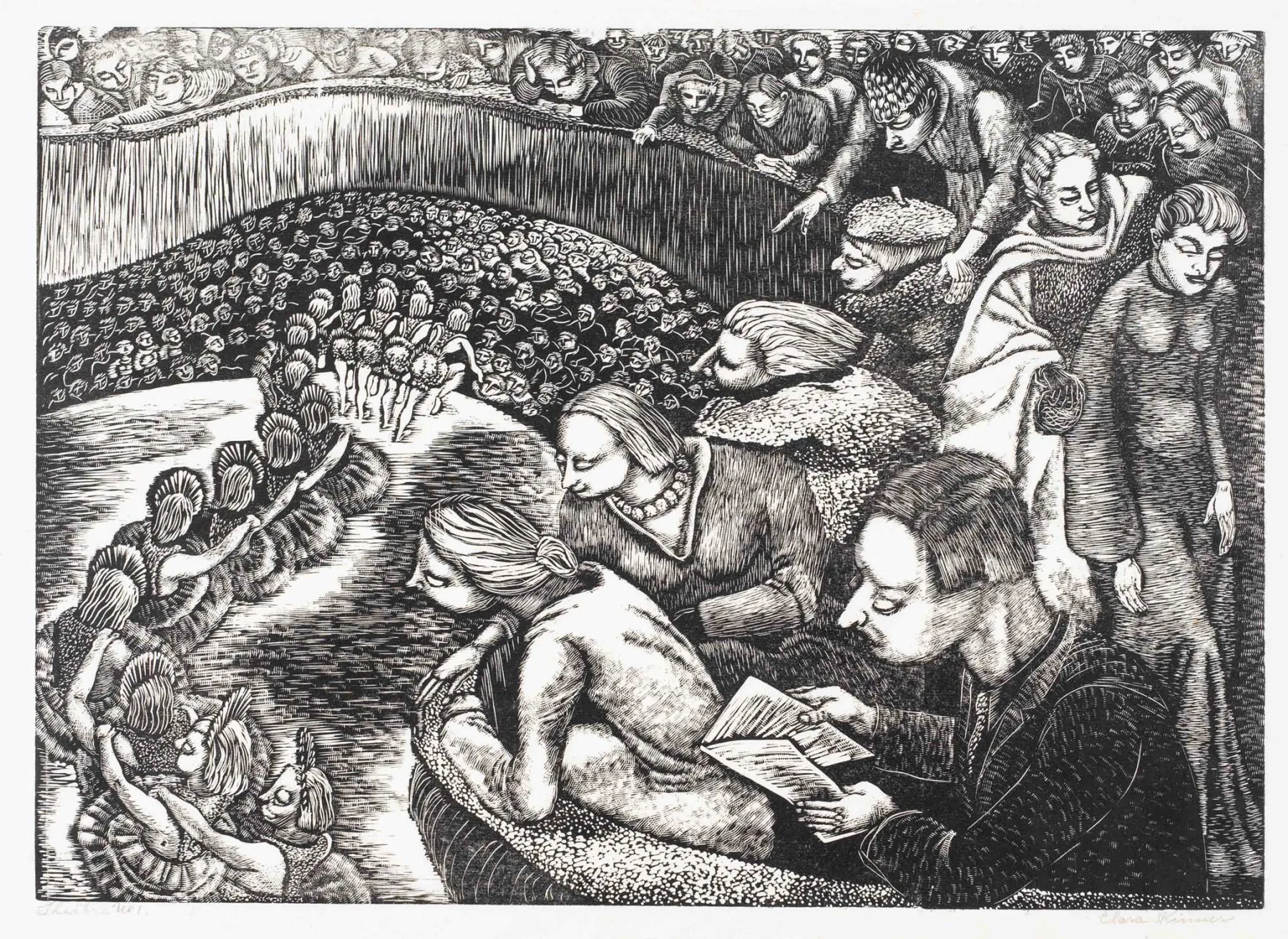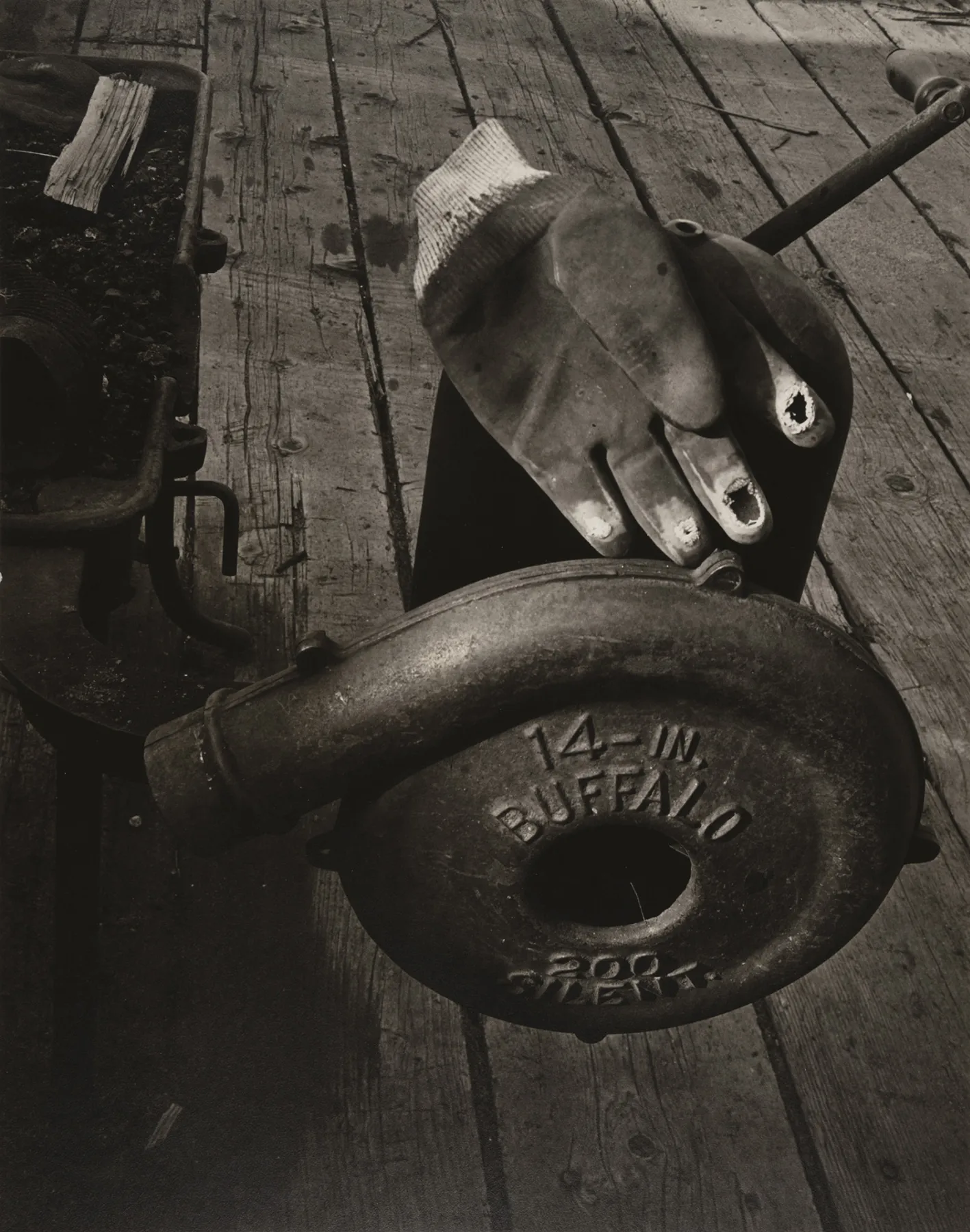WPA (Works Progress Administration)
The JSMA is the steward of over 300 WPA-era works created between 1933 and 1941 as part of the Federal Art Project. This work-relief initiative that employed thousands of artists across 48 states was the most extensive and the most widely known program under the United States’ government’s Works Program Administration. Paintings, prints, sculpture, and photographs by over 170 U.S.-based artists, including Berenice Abbott, Fay Chong, Grace Rivet Clements, Gordon Gilkey, Violet Nakashima, C.S. Price, Clara Skinner, Rufino Tamayo, and Minor White, are on long-term loan to the museum from the federal government to be presented for exhibition and study.
Selected Artworks

Sheep, ca. 1935 |
Lithograph, 9-1/4 x 13-1/2 inches |
Allocated by the U.S. Government Commissioned through the New Deal art projects

Conversation, 1936 |
Watercolor on paper, 10 15/16 x 8 7/16 inches |
Allocated by the U.S. Government Commissioned through the New Deal art projects

Theatre No. 1, ca. 1935 |
Woodcut, sheet: 10 x 14 inches; image: 10-1/16 x 14-1/16 inches |
Courtesy of the Fine Arts Program, Public Buildings Service, U.S. General Services Administration Commissioned through the New Deal art projects

“Hand Forge” Sand and Gravel Company East Side of Morrison Bridge #560, June 11, 1940 |
Gelatin silver print mounted on illustration board, 25 x 20 inches |
Allocated by the U.S. Government Commissioned through the New Deal art projects


